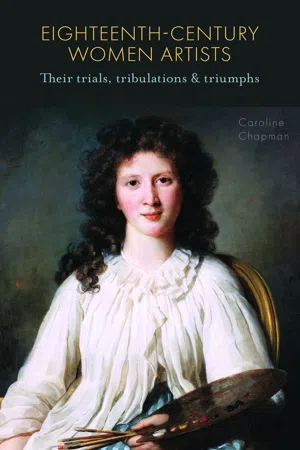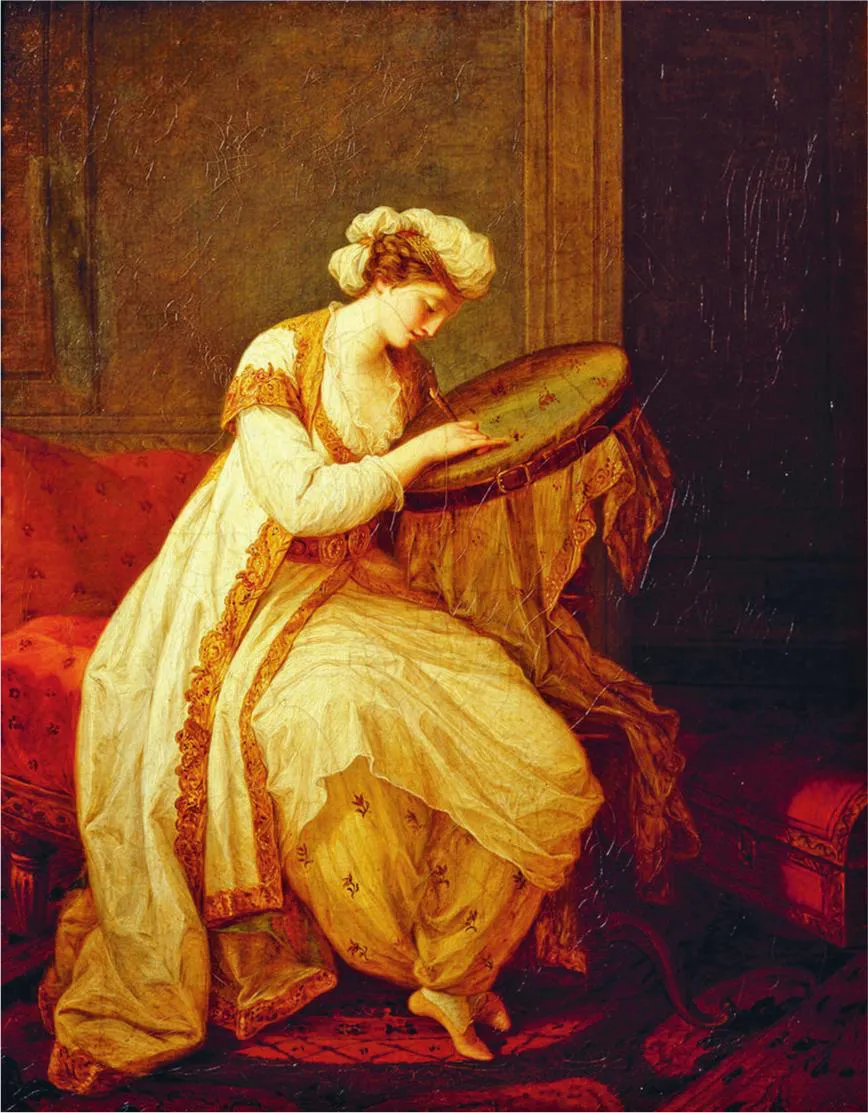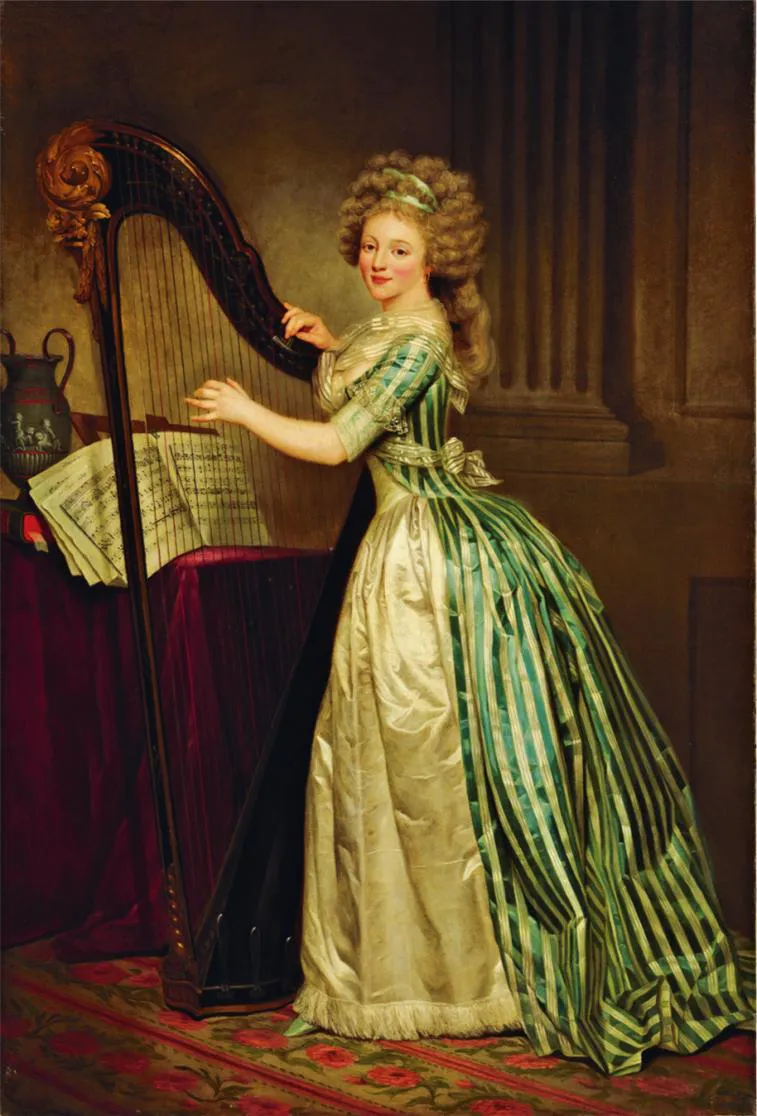I would have you remember, my dear, that as sure as anything intrepid, free, and in a prudent degree bold, becomes a man, so whatever is soft, tender, and modest, renders your sex amiable. In this one instance we do not prefer our own likeness; and the less you resemble us the more you are sure to charm…
LETTER FROM SAMUEL RICHARDSON TO HIS DAUGHTER IN 17411
The key words in this passage are ‘bold’ and ‘modest’. Boldness in a man was an asset but dangerously unfeminine in a woman. Modesty was the principal female virtue of the eighteenth century, the one which all women should pretend to possess if they were not already endowed with it naturally. In his poem The Triumphs of Temper, William Hayley adds ‘Innocence and Ease’ and ‘a wish to please’,2 but all these virtues sit uneasily with those required by a woman intent on becoming a professional artist. Instead she must work all the hours of daylight and then be sufficiently bold to promote herself and her work in the marketplace. In so doing, she was challenging the unwritten rule of polite society: that a woman’s proper place was in the home, performing the traditional roles of docile daughter, dutiful wife and devoted mother.
The education of a middle- or upper-class girl was designed to enable her to fulfil these roles. She was taught either at home by a governess or sent to boarding school to learn to read, write and do the household accounts. (As an ‘extra’, young ladies could be taught the correct way to get in and out of a carriage.) Even this much erudition was going too far for Mrs Malaprop in Richard Brinsley Sheridan’s play The Rivals (first performed in 1775): ‘You thought, miss! I don’t know any business you have to think at all – thought does not become a young woman.’3 A working knowledge of French – the lingua franca of European society – was essential, a little Italian useful. A few enlightened parents added a grounding in the classics to these basic skills, but this was rare and often not appreciated, even by the feminine sex. ‘I hate to hear Latin out of a woman’s mouth’, a lady friend complained to Samuel Richardson, ‘There’s something in it, to me masculine.’4
After several years of an English education the finished product could be neatly summed up by Matthew Bramble’s description of his niece in Smollett’s Humphrey Clinker (1771): ‘She is a poor good-natured simpleton, as soft as butter, and as easily melted: not that she’s a fool; the girl’s parts are not despicable, and her education has not been neglected; that is to say, she can write and spell, and speak French, and play upon the harpsichord; then she dances finely…’5
In France, girls as young as six would be bundled off to a convent where, according to Jules and Edmond de Goncourt, the aim of their education was ‘to make the child play the lady’.6 Convents, however, were institutions of safe-keeping for other than young girls: discarded mistresses, wives separated from their husbands, a lady seeking to liquidate her husband’s debts, an actress confined by a jealous lover, all found refuge within a convent’s cloistered walls. The parents of a girl whose formative years were spent rubbing shoulders with such fellow inmates might find to their consternation that their little darling had learned more about the world than they had bargained for.
For a girl to cultivate ‘accomplishments’, however, was actively encouraged, so long as it was not taken to extremes. A leading contemporary review smugly recommended painting as an acceptable pastime for women as:
In her novel Camilla (1796), Fanny Burney warned that accomplishments should be restricted to ‘a little music, a little drawing, and a little dancing; which should all … be but slightly pursued, to distinguish a lady of fashion from an artist’.8 Such attributes equipped a girl to shine in the drawing room and added to her charms as a wife. They also helped to alleviate the excruciating boredom of an upper-class woman’s life in the eighteenth century.
Although unaccountably omitted by Miss Burney, needlework was looked upon as a highly suitable occupation for a woman. Lady Mary Wortley Montagu, a colourful and eccentric feminist, with strong views on a multitude of subjects, had no doubts about the matter: ‘It is as scandalous for a woman not to know how to use a needle, as for a man not to know how to use a sword.’9 That it was a becoming and natural pastime is borne out by the number of women who chose to be depicted wielding a needle in their portraits. Angelica Kauffman (1741–1807) executed several images of women sewing, including a drawing of herself embroidering. One of her most charming works, Morning Amusement, shows a lady, dressed in the then fashionable ‘Turkish mode’, bent gracefully over her tambour frame. The Scottish portraitist Catherine Read (1723–78) seemed to favour showing women peacefully at work, although according to Fanny Burney she was incapable of so much as altering a dress.
The ability to play a musical instrument was encouraged as society admired a girl with artistic skills, but on no account must she become too proficient. The flourishing career of singer Elizabeth Linley was cut short when she married Sheridan, as he forbade her to perform except at exclusive gatherings of the nobility. The father of Anne Ford, an accomplished player of the viola da gamba, went further: when she organised a series of subscription concerts, he countered by surrounding the theatre with Bow Street Runners to prevent the first concert from taking place.
Most young girls would have been taught music as well as drawing and painting at school – occupations dismissed by Dorothea in George Eliot’s Middlemarch ( 1871–72) as ‘small tinkling and smearing’.10 But women were expected to restrict their artistic endeavours to painting pretty pictures in watercolour and must never take their ‘smearing’ too seriously. For a woman to shut herself away in an artist’s studio all day was awful proof that she had lost track of her priorities. To spend her day belabouring a lump of marble with a hammer and chisel was decidedly not what she should be doing. ‘To model well in clay’, notes George Pas...



